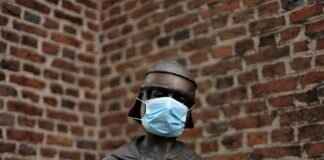This article explores the essential methods and safety precautions for stripping lead-based paint from surfaces, ensuring a safe environment while preserving the integrity of your home or workspace.
Understanding Lead-Based Paint
Lead-based paint was widely used in homes and buildings until it was banned in the late 1970s due to its hazardous effects. It contains lead, a toxic metal that can cause serious health issues when ingested or inhaled as dust. Understanding the properties of lead-based paint is crucial for homeowners and renovators, as it helps in recognizing potential risks and implementing safe removal practices.
Health Risks of Lead Exposure
Lead exposure poses significant health risks, especially for vulnerable populations such as children and pregnant women. Even small amounts of lead can lead to severe health problems.
- Neurological Damage: Exposure can impair cognitive functions, leading to learning disabilities and behavioral issues in children.
- Physical Health Issues: Adults may experience hypertension, kidney damage, and reproductive problems.
Symptoms of Lead Poisoning
Recognizing the symptoms of lead poisoning is essential for early intervention. Common symptoms include:
- Headaches
- Abdominal pain
- Fatigue
- Cognitive impairments
Testing for Lead-Based Paint
Before starting any renovation or stripping, it is crucial to test for lead in paint. Various testing methods are available, including:
- DIY Test Kits: These kits allow homeowners to check for lead presence themselves.
- Professional Testing: Hiring a certified inspector ensures accurate results and safety compliance.
Preparing for Lead Paint Removal
Proper preparation is key to a successful lead paint removal process. This includes:
- Gathering Necessary Tools: Equip yourself with respirators, gloves, and drop cloths to ensure safety.
- Setting Up a Safe Work Area: Seal off the area and ensure proper ventilation to minimize lead dust exposure.
Effective Stripping Methods for Lead-Based Paint
There are several methods for stripping lead-based paint, including:
- Mechanical Removal: Techniques like scraping and sanding can effectively remove paint but must be done carefully to control dust.
- Chemical Strippers: These can be effective but come with risks, so understanding their pros and cons is essential.
Disposing of Lead Waste Safely
Proper disposal of lead-based paint waste is crucial to prevent environmental contamination. Best practices include:
- Understanding Local Regulations: Familiarize yourself with local laws regarding lead waste disposal.
- Using Certified Facilities: Ensure lead waste is disposed of at certified waste disposal facilities.
Post-Removal Cleaning and Safety Measures
After stripping lead-based paint, thorough cleaning is essential to eliminate any remaining lead dust. Effective cleaning methods include:
- Wet Wiping: This method helps capture lead dust rather than dispersing it into the air.
- HEPA Vacuuming: Utilizing HEPA filters ensures that even the smallest lead particles are effectively removed.
Long-Term Safety Practices
Implementing long-term safety practices helps maintain a lead-safe environment. Regular monitoring and preventive measures are vital to protect against lead exposure. This includes:
- Conducting periodic inspections of painted surfaces.
- Ensuring children and pregnant women stay away from areas with potential lead exposure.

Understanding Lead-Based Paint
Lead-based paint was widely utilized in residential and commercial properties until its ban in the late 1970s. This type of paint contains a significant amount of lead, a toxic metal that poses serious health risks, especially to vulnerable populations such as children and pregnant women. Understanding the properties and risks associated with lead-based paint is essential for homeowners and renovators who are considering any form of removal or renovation in older homes.
Properties of Lead-Based PaintLead-based paint is known for its durability and adherence to surfaces, making it a popular choice for both interior and exterior applications. It was commonly used in homes, schools, and public buildings due to its ability to withstand wear and tear. However, the very properties that made it desirable also contribute to its dangers. When lead-based paint deteriorates, it can create lead dust or chips that are easily inhaled or ingested, leading to lead poisoning.
Health Risks Associated with Lead ExposureLead exposure can result in a range of health issues. Children are particularly susceptible as their developing brains and nervous systems can be severely affected by lead. Common health risks include:
- Cognitive Impairments: Lead exposure can lead to learning disabilities and lower IQ levels in children.
- Behavioral Issues: Children exposed to lead may exhibit increased aggression, hyperactivity, and attention problems.
- Physical Health Problems: Adults may experience high blood pressure, kidney damage, and reproductive issues due to lead exposure.
Legal and Safety ConsiderationsDue to the recognized dangers of lead-based paint, regulations have been established to protect residents, especially in older homes. The Environmental Protection Agency (EPA) mandates that homeowners and contractors follow specific guidelines when renovating buildings that may contain lead paint. This includes conducting lead testing and implementing safe removal practices to minimize exposure risks.
Importance of AwarenessAwareness of the risks associated with lead-based paint is crucial for anyone living in or renovating older homes. Homeowners should consider having their properties tested for lead if they were built before 1978. Understanding the implications of lead exposure and the necessary precautions can help maintain a safe living environment.
In summary, lead-based paint remains a significant concern for many homeowners, particularly those with older properties. Recognizing its properties, understanding the health risks, and adhering to safety regulations are essential steps in ensuring a safe and healthy home environment.

Health Risks of Lead Exposure
Lead exposure poses significant health risks that can affect various populations, particularly children and pregnant women. This section aims to provide a comprehensive overview of the health implications associated with lead exposure, emphasizing the importance of awareness and preventive measures.
Understanding Lead Poisoning
Lead poisoning occurs when lead builds up in the body, often over months or years. Even small amounts of lead can be harmful, particularly for young children whose bodies and brains are still developing. The Centers for Disease Control and Prevention (CDC) identifies blood lead levels as a critical measure for assessing exposure, with levels above 5 micrograms per deciliter being a cause for concern.
Symptoms of Lead Poisoning
Recognizing the symptoms of lead poisoning is crucial for early intervention. Common symptoms include:
- Headaches
- Abdominal pain
- Nausea and vomiting
- Constipation
- Fatigue
- Behavioral issues, such as irritability and hyperactivity
In children, lead exposure can lead to more severe issues, including developmental delays and learning difficulties. Parents and caregivers should be vigilant for these symptoms, particularly in homes with lead-based paint or other lead sources.
Long-Term Effects on Health
The long-term effects of lead exposure can be devastating. In children, prolonged exposure can result in permanent developmental delays, reduced IQ, and difficulties in attention and learning. For adults, chronic exposure can lead to serious health issues, including hypertension, kidney damage, and reproductive problems. Understanding these risks underscores the importance of safe lead removal practices and the need for regular health screenings in vulnerable populations.
Vulnerable Populations
Certain groups are particularly at risk for lead exposure. Young children are more susceptible due to their tendency to put objects in their mouths and their developing nervous systems. Pregnant women also face risks, as lead can cross the placenta and affect fetal development. The impact of lead exposure during pregnancy can result in low birth weight, premature birth, and developmental issues in children. It is essential for communities to focus on protecting these vulnerable populations through education and preventive measures.
Testing for Lead Exposure
Before any renovation or stripping of lead-based paint, testing for lead in the home is crucial. Homeowners should consider hiring certified professionals to conduct lead inspections. Various testing methods are available, including:
- Lead test kits
- Laboratory analysis of paint samples
- Dust wipe samples
Regular testing can help identify lead hazards early, allowing for timely intervention and remediation.
In summary, the health risks associated with lead exposure are profound and far-reaching. Understanding these risks, particularly for vulnerable populations, is crucial for implementing effective safety measures and ensuring a healthy living environment. Awareness, education, and proactive testing are vital components in mitigating the dangers of lead exposure.
Symptoms of Lead Poisoning
Lead poisoning is a serious health concern that can affect individuals of all ages, but it is particularly dangerous for young children and pregnant women. Understanding the is crucial for early diagnosis and intervention. Early recognition can prevent further exposure and mitigate long-term health issues.
Lead poisoning can manifest through a variety of symptoms, which may vary depending on the level and duration of exposure. Some of the most common symptoms include:
- Headaches: Frequent or severe headaches can be an early indicator of lead exposure.
- Abdominal Pain: Individuals may experience cramping, pain, or discomfort in the abdomen.
- Cognitive Impairments: Difficulty concentrating, memory issues, and learning disabilities are significant concerns, especially in children.
- Irritability: Increased irritability or mood swings can occur, particularly in children.
- Fatigue: Unexplained tiredness or lethargy is another common symptom.
- Loss of Appetite: A decrease in appetite, leading to weight loss, may also be observed.
- Nausea and Vomiting: Gastrointestinal symptoms like nausea and vomiting can arise from lead exposure.
If left untreated, lead poisoning can lead to more severe health complications. These may include:
- Seizures: High levels of lead can cause seizures, which require immediate medical attention.
- Coma: In extreme cases, lead poisoning can lead to loss of consciousness or coma.
- Developmental Delays: In children, prolonged exposure can result in long-term developmental delays and behavioral issues.
Children and pregnant women are particularly vulnerable to the effects of lead poisoning. In children, symptoms can include:
- Learning Difficulties: Challenges in school performance and cognitive development.
- Behavioral Issues: Increased hyperactivity, aggression, or withdrawal can be indicative of lead exposure.
For pregnant women, lead poisoning poses risks not only to the mother but also to the developing fetus, potentially leading to:
- Premature Birth: Increased risk of delivering prematurely.
- Low Birth Weight: Babies born with low birth weight may experience immediate and long-term health issues.
Recognizing the symptoms of lead poisoning early is vital. If you suspect lead exposure, it is essential to seek medical evaluation and testing. Blood tests can determine lead levels and guide necessary interventions. Early treatment can significantly reduce the risk of long-term health complications.
In conclusion, being aware of the symptoms associated with lead poisoning is essential for safeguarding health, especially for vulnerable populations. Regular screening and prompt medical attention can make a significant difference in outcomes.
Long-Term Effects on Health
Understanding the long-term effects of lead exposure is crucial for safeguarding public health, especially among vulnerable populations. Lead, a toxic metal, has been utilized in various applications, including paint, plumbing, and gasoline, for decades. However, its detrimental effects on health have become increasingly evident, necessitating awareness and preventive measures.
Long-term exposure to lead can lead to a myriad of health issues that affect both children and adults. For children, the implications can be particularly severe. Research indicates that even low levels of lead exposure can result in developmental delays, affecting cognitive and physical growth. Children exposed to lead may experience difficulties in learning, reduced IQ, and behavioral problems. These issues can persist into adulthood, impacting educational and occupational opportunities.
In adults, the neurological effects of lead exposure can manifest as cognitive decline, increased risk of dementia, and other serious neurological disorders. Chronic exposure has been linked to hypertension, kidney damage, and reproductive issues. Moreover, adults who were exposed to lead as children may face compounded health risks, highlighting the need for early detection and intervention.
Understanding these effects underscores the importance of safe removal and remediation of lead-based hazards. It is essential to recognize that lead exposure does not solely affect individuals; it can have broader implications for families and communities. The socioeconomic impacts of lead poisoning can be profound, leading to increased healthcare costs, lost productivity, and a burden on educational systems.
To mitigate these risks, public health initiatives must focus on education and prevention. Awareness campaigns can help inform communities about the dangers of lead exposure and the importance of testing for lead in homes, especially those built before 1978 when lead-based paints were banned in residential properties. Engaging with local health departments and environmental agencies can provide resources and support for safe lead removal practices.
Furthermore, it is imperative to advocate for policies that prioritize lead hazard control and provide funding for remediation efforts in at-risk communities. Ensuring that children and pregnant women are protected from lead exposure should be a public health priority, as the long-term effects can be devastating and irreversible.
In conclusion, the long-term effects of lead exposure are significant and multifaceted, impacting both physical and cognitive health across the lifespan. By understanding these risks, individuals and communities can take proactive steps to eliminate lead hazards and promote a safer environment for future generations.
Vulnerable Populations
Lead exposure poses significant health risks, particularly for certain groups within the population. Among these, young children and pregnant women are the most vulnerable. Understanding why these groups are at heightened risk is crucial for developing effective safety measures and interventions.
- Young Children: Children are particularly susceptible to the harmful effects of lead due to their developing brains and bodies. Lead exposure can interfere with normal growth and development, leading to severe cognitive and behavioral issues. Children often come into contact with lead through hand-to-mouth activities, particularly in environments where lead dust or chips are present, such as older homes with lead-based paint.
- Pregnant Women: For pregnant women, lead exposure can have dire consequences not only for themselves but also for their unborn children. Lead can cross the placental barrier, affecting fetal development. This exposure can lead to low birth weight, premature birth, and developmental delays in children. Awareness and proactive measures are essential to minimize risks during pregnancy.
Why Awareness is Crucial
Awareness of these vulnerable populations is vital for several reasons. First, it allows for targeted public health campaigns that educate families about the dangers of lead exposure and the importance of testing for lead in their homes. Second, it encourages policymakers to implement stricter regulations regarding lead in housing and consumer products.
Furthermore, community programs can be developed to provide resources and support for families at risk. For example, free lead testing for homes and educational workshops can empower parents to take action in safeguarding their children.
Preventive Measures
To protect these vulnerable groups, several preventive measures can be taken:
1. Regular testing of homes built before 1978 for lead-based paint.2. Immediate remediation of lead hazards in living environments.3. Education on safe cleaning practices to minimize lead dust.4. Promotion of healthy nutrition, as certain foods can help reduce lead absorption in the body.
By focusing on these preventive strategies, communities can significantly reduce the risk of lead exposure among young children and pregnant women.
Conclusion
In summary, understanding the vulnerabilities of specific populations, particularly young children and pregnant women, is critical in the fight against lead exposure. By raising awareness and implementing effective safety measures, we can create a safer environment for these at-risk groups, ensuring their health and well-being for the future.
Testing for Lead-Based Paint
Before embarking on any renovation or stripping project, it is imperative to conduct thorough testing for lead in paint, especially in homes built before 1978 when lead-based paints were commonly used. Understanding the various testing methods available can empower homeowners to make informed decisions and ensure the safety of their living environments.
- Visual Inspection: A trained professional can conduct a visual inspection to identify peeling or chipping paint, which may indicate the presence of lead. This method, while not definitive, can help prioritize areas for testing.
- Lead Test Kits: Homeowners can purchase lead test kits from hardware stores. These kits typically include swabs that change color upon contact with lead. They are easy to use and provide immediate results, but their accuracy can vary.
- X-Ray Fluorescence (XRF) Testing: This non-destructive method uses a handheld device to detect lead content in paint layers. XRF testing is highly accurate and can provide a detailed analysis of lead levels, making it a preferred choice for thorough assessments.
- Laboratory Analysis: For the most reliable results, samples of paint can be collected and sent to a certified laboratory for analysis. This method provides a comprehensive breakdown of lead content and is often required for compliance with regulations.
It is crucial for homeowners to understand that not all testing methods are created equal. While visual inspections and lead test kits can provide quick assessments, they may not be sufficient for determining the extent of lead contamination. In contrast, XRF testing and laboratory analysis offer more definitive results, ensuring that the necessary precautions are taken during renovation.
Additionally, it is important to note that lead dust can be hazardous even if the paint appears intact. Therefore, testing should not only focus on painted surfaces but also consider the potential for lead dust contamination in the surrounding environment.
When selecting a testing method, homeowners should also consider their specific circumstances, including the age of their home, the condition of the paint, and their budget. Engaging a certified professional for lead testing can provide peace of mind and ensure compliance with local regulations.
Ultimately, understanding the risks associated with lead exposure and the importance of accurate testing can significantly impact the safety of your home. By taking proactive steps to test for lead-based paint, homeowners can protect their families and make informed decisions about renovations and maintenance.

Preparing for Lead Paint Removal
Proper preparation is essential for a successful lead paint removal process. This section outlines the critical steps to ensure your workspace is safe and that you are adequately protected during the removal process.
- Understand the Risks: Before beginning, familiarize yourself with the dangers associated with lead exposure. Lead dust can be harmful, particularly to children and pregnant women.
- Gather Necessary Tools and Materials: Having the right equipment is vital. Essential tools include:
- Respirators: A high-quality respirator with HEPA filters is crucial for protecting your lungs from lead dust.
- Protective Clothing: Wear disposable coveralls, gloves, and goggles to shield your skin and eyes from lead particles.
- Drop Cloths: Use heavy-duty drop cloths to cover floors and furniture, preventing lead dust from spreading.
- Containment Supplies: Plastic sheeting and tape will help seal off the work area.
- Setting Up a Safe Work Area: Create a controlled environment to minimize lead exposure. Follow these steps:
- Seal Off the Area: Use plastic sheeting to enclose the workspace. This prevents dust from escaping to other areas of your home.
- Ensure Proper Ventilation: Open windows and use exhaust fans to keep air circulating and reduce lead dust concentration.
- Post Warning Signs: Clearly mark the area with warning signs to prevent unauthorized access.
- Inform Others: If you live with others, inform them about the lead paint removal process. Ensure they understand the risks and the importance of staying away from the work area.
- Plan for Waste Disposal: Determine how you will dispose of lead-based paint waste. Contact local waste management authorities to understand regulations and find certified disposal facilities.
Key Safety Practices:Implementing safety practices is crucial during the lead paint removal process. Always wear protective gear, and avoid eating or drinking in the work area to reduce the risk of lead ingestion. After completing the removal, thoroughly wash your hands and change out of your work clothes before re-entering shared spaces.
By taking these preparation steps seriously, you can ensure a safer lead paint removal process, protecting both yourself and your environment from the dangers of lead exposure.
Gathering Necessary Tools and Materials
When tackling the task of stripping lead-based paint, equipping yourself with the right tools and materials is vital for ensuring both efficiency and safety. The process can be hazardous if not approached with the proper precautions and equipment. Below is a comprehensive list of essential items that should be gathered before beginning the lead paint stripping process.
- Respirators: A high-quality respirator is crucial for protecting your lungs from lead dust and harmful fumes. Look for respirators that are rated for lead exposure, such as those with HEPA filters, which can effectively trap small particles.
- Gloves: Durable, chemical-resistant gloves are essential to protect your skin from lead exposure. Opt for gloves made from materials such as nitrile or rubber, which provide a barrier against harmful substances.
- Drop Cloths: To prevent lead dust from spreading, use heavy-duty drop cloths to cover floors and furniture. This not only keeps your workspace clean but also minimizes the risk of lead contamination in other areas of your home.
- Scrapers and Putty Knives: These tools are essential for mechanical removal of paint. Choose high-quality scrapers that can effectively remove lead paint without damaging the underlying surface.
- Sanding Equipment: If sanding is part of your removal process, ensure you have the appropriate sanders and sandpaper. Use a vacuum sander with a dust collection system to minimize airborne lead particles.
- Plastic Sheeting: Use plastic sheeting to seal off the work area. This helps contain dust and debris, protecting other parts of your home from contamination.
- Waste Disposal Bags: Lead waste must be disposed of properly. Use heavy-duty plastic bags specifically designed for hazardous waste to collect and seal lead paint chips and debris.
- Cleaning Supplies: After the removal process, thorough cleaning is necessary. Gather supplies such as wet wipes, mops, and HEPA vacuums to ensure all lead dust is effectively removed from surfaces.
In addition to these tools, it’s important to have a first aid kit on hand in case of any accidents. Always wear protective clothing, including long sleeves and pants, to minimize skin exposure. Lastly, ensure that you have access to clear instructions and guidelines for safe lead paint removal, as knowledge is key to a successful and safe operation.
By gathering these essential tools and materials, you can significantly enhance the efficiency of the lead paint stripping process while ensuring a safer environment for yourself and others. Always prioritize safety and adhere to local regulations regarding lead paint removal and disposal.
Setting Up a Safe Work Area
Creating a safe work environment is paramount when dealing with lead-based paint. The potential health risks associated with lead exposure necessitate a meticulous approach to preparation and safety. Here are essential steps to ensure a controlled and secure workspace.
- Sealing Off the Area: Start by isolating the work area. Use plastic sheeting to cover doors, windows, and vents. This prevents lead dust from escaping into other parts of the building. Ensure that all openings are securely taped to avoid any gaps.
- Ventilation: Proper ventilation is crucial to minimize inhalation of lead dust and fumes. Open windows if possible and use fans to create airflow. However, be cautious not to disrupt the sealed areas. Consider using HEPA-filtered air purifiers to enhance air quality.
- Personal Protective Equipment (PPE): Equip yourself with the necessary PPE, including respirators, gloves, and protective clothing. A respirator with a HEPA filter is essential for filtering out lead particles. Ensure that your clothing is disposable or can be washed separately from other laundry.
- Signage: Clearly mark the work area with warning signs indicating that lead paint removal is in progress. This alerts others to stay clear of the area, reducing the risk of accidental exposure.
- Organizing Tools and Materials: Before beginning work, gather all necessary tools and materials. Having everything on hand minimizes the need to leave the work area, reducing the risk of spreading lead dust. Essential items include drop cloths, scrapers, and chemical strippers.
Establishing Work Protocols:
Implementing strict work protocols is vital. Designate a specific entry and exit point for the work area to limit movement and potential contamination. Ensure that anyone entering the area is wearing appropriate PPE.
Waste Management:
Prepare for waste disposal by having sealed containers ready for lead paint debris. This minimizes the risk of lead dust escaping during clean-up. Follow local regulations for hazardous waste disposal to ensure compliance and safety.
In summary, creating a controlled environment when working with lead-based paint is not just a precaution; it is a necessity. By sealing off the area, ensuring proper ventilation, and equipping yourself with the right tools and protective gear, you can significantly reduce the risks associated with lead exposure. Taking these steps will help ensure a safer work environment for you and those around you.

Effective Stripping Methods for Lead-Based Paint
Stripping lead-based paint requires careful consideration of both effectiveness and safety. As homes built before 1978 may contain lead paint, understanding the various methods available for its removal is crucial. Here, we will delve into the most commonly used techniques, their pros and cons, and safety measures to consider.
- Mechanical Removal Techniques
Mechanical removal involves the use of tools to physically strip paint from surfaces. This can include scraping, sanding, or using heat guns. While these methods can be effective, they come with significant risks:
- Dust Generation: Mechanical methods can create lead dust, which is hazardous if inhaled or ingested.
- Surface Damage: Improper technique can damage the underlying surface, leading to costly repairs.
- Time-Consuming: These methods can be labor-intensive and may require multiple passes to achieve a clean surface.
When using mechanical methods, it is essential to wear protective gear, including respirators, gloves, and goggles, to minimize exposure to lead dust.
- Chemical Strippers: Pros and Cons
Chemical strippers are another popular option for removing lead-based paint. These products work by breaking down the paint’s chemical bonds, allowing for easier removal. However, they also have their drawbacks:
- Fumes and Vapors: Many chemical strippers emit harmful fumes that can pose health risks, necessitating proper ventilation.
- Surface Compatibility: Some chemical strippers can damage wood or other surfaces, making it crucial to test on a small area first.
- Environmental Concerns: Disposal of chemical strippers must be handled carefully to avoid environmental contamination.
When opting for chemical strippers, always read the manufacturer’s instructions and ensure the work area is well-ventilated.
- Wet Methods
Wet methods involve applying water or a wetting agent to the painted surface before scraping or sanding. This technique helps to suppress dust and minimizes lead exposure. Benefits of wet methods include:
- Reduced Dust: Keeping surfaces moist significantly lowers the amount of airborne lead dust generated during removal.
- Safer for Surroundings: Wet methods are less likely to contaminate surrounding areas with lead particles.
However, wet methods can also have limitations, such as:
- Longer Drying Time: Surfaces may take longer to dry, potentially delaying subsequent steps in the renovation process.
- Potential for Water Damage: Excessive moisture can lead to mold growth or damage to the underlying material.
Regardless of the method chosen, it is critical to follow safety protocols and local regulations concerning lead paint removal. Always consult with professionals if unsure about the best approach for your specific situation.
Mechanical Removal Techniques
Mechanical removal is a widely-used method for stripping lead-based paint from various surfaces, and it involves **scraping** or **sanding** the paint away. This technique can be quite effective, but it requires a high level of caution and precision to ensure safety and minimize the generation of dust and debris, which can pose health risks.
- Scraping: This method involves using a handheld tool, such as a putty knife or scraper, to physically remove the paint. It is essential to use the right angle and pressure to avoid damaging the underlying surface.
- Sanding: Sanding can be performed using manual sanders or power tools. While this method is efficient for flat surfaces, it can create a significant amount of dust. Therefore, using a vacuum sander equipped with a HEPA filter is recommended to capture lead particles effectively.
When employing mechanical removal techniques, it is imperative to wear appropriate personal protective equipment (PPE). This includes a **respirator**, **gloves**, and **goggles** to protect against inhalation of lead dust and skin contact. Additionally, setting up a containment area with plastic sheeting and ensuring proper ventilation can further reduce exposure risks.
Advantages of Mechanical Removal
- Effective for thick layers of paint.
- Immediate results, allowing for quick assessment of the underlying surface.
- No chemical exposure, making it a more environmentally friendly option.
Disadvantages of Mechanical Removal
- Can produce hazardous dust if not managed properly.
- May damage the underlying substrate if not done carefully.
- Labor-intensive and time-consuming, especially for large areas.
In addition to the mechanical removal methods, it is crucial to follow up with thorough cleaning procedures to ensure that any lead dust generated during the process is effectively removed. Techniques such as wet wiping surfaces and using a HEPA vacuum can help in achieving a lead-safe environment.
In conclusion, while mechanical removal techniques can be an effective strategy for stripping lead-based paint, they require careful execution and adherence to safety protocols. By understanding the advantages and disadvantages of these methods, individuals can make informed decisions that prioritize safety and health during the lead paint removal process. Always consult with professionals if unsure about the best practices for your specific situation, as they can provide invaluable insights and guidance.
Chemical Strippers: Pros and Cons
Chemical strippers are widely used in the process of removing lead-based paint due to their effectiveness and ease of application. However, while they can be a powerful tool for restoration, they also present several hazards that must be carefully considered. In this section, we will explore the advantages and disadvantages of using chemical strippers in lead paint removal.
Advantages of Chemical Strippers
- Efficiency: Chemical strippers can remove multiple layers of paint in one application, significantly reducing the time and effort required compared to mechanical methods.
- Less Dust: Unlike sanding or scraping, which can create a large amount of dust, chemical strippers minimize airborne particles, which is particularly important when dealing with lead-based paint.
- Ease of Use: Many chemical strippers are designed for user-friendly application, often requiring just a brush or a spray to apply, making them accessible for DIY enthusiasts.
- Effective on Various Surfaces: Chemical strippers can be used on a variety of surfaces, including wood, metal, and masonry, making them versatile for different projects.
Disadvantages of Chemical Strippers
- Health Hazards: Many chemical strippers contain toxic substances that can pose serious health risks, including respiratory issues and skin irritation. Proper protective gear, such as gloves and masks, is essential.
- Environmental Concerns: The use of chemical strippers can lead to environmental contamination if not disposed of properly. It is crucial to follow local regulations regarding hazardous waste disposal.
- Potential Damage to Surfaces: Some chemical strippers can damage the underlying surface if left on for too long or if used improperly. This can result in costly repairs and additional labor.
- Fumes and Odors: Many chemical strippers emit strong fumes that can be unpleasant and may require adequate ventilation, making indoor use challenging.
Best Practices for Using Chemical Strippers
To maximize the benefits of chemical strippers while minimizing their risks, consider the following best practices:
- Read Instructions: Always read the manufacturer’s instructions and safety data sheets before use to understand the specific hazards and application methods.
- Ventilation: Ensure that the workspace is well-ventilated to reduce the concentration of harmful fumes.
- Protective Gear: Wear appropriate protective gear, including gloves, goggles, and respirators, to safeguard against exposure.
- Test a Small Area: Before applying a chemical stripper to the entire surface, test a small inconspicuous area to assess its effectiveness and any potential damage.
In conclusion, while chemical strippers offer an efficient solution for lead paint removal, it is essential to weigh their advantages against the potential hazards. By following safety guidelines and best practices, homeowners can effectively utilize chemical strippers while minimizing risks to their health and the environment.

Disposing of Lead Waste Safely
Proper disposal of lead-based paint waste is essential to prevent environmental contamination and safeguard public health. Lead is a toxic metal that poses serious risks, particularly when it enters the ecosystem. In this section, we will explore the best practices for disposing of lead waste responsibly, ensuring compliance with regulations and promoting safety.
Lead waste can come from various sources, including renovation projects, paint stripping, and demolition. When not disposed of correctly, lead can leach into soil and water, leading to widespread contamination. This can have devastating effects on both human health and the environment. Therefore, understanding the importance of safe disposal methods is crucial.
Before disposing of lead waste, it is vital to familiarize yourself with local regulations. Many jurisdictions have strict guidelines governing the disposal of hazardous materials, including lead. These regulations often specify how to package, label, and transport lead waste. Failure to comply can result in hefty fines and legal repercussions.
- Contact Local Authorities: Reach out to your local waste management agency to understand the specific regulations in your area.
- Review State and Federal Guidelines: Familiarize yourself with relevant state and federal laws regarding hazardous waste disposal.
Employing safe disposal methods is crucial for minimizing risks associated with lead exposure. Here are some recommended practices:
- Certified Waste Disposal Facilities: Always use facilities that are certified to handle hazardous waste. These facilities are equipped to manage lead waste safely and comply with environmental regulations.
- Encapsulation: In some cases, encapsulating lead paint waste in a secure material can be an effective method of disposal. This should only be done under professional guidance.
- Transporting Lead Waste: When transporting lead waste, ensure it is properly sealed and labeled to prevent any accidental exposure or spillage.
Many communities offer resources to assist with the safe disposal of lead waste. These may include:
- Recycling Programs: Some areas have recycling programs specifically for hazardous materials, including lead.
- Public Education Campaigns: Local governments often provide educational resources to inform residents about safe disposal practices.
- Community Clean-Up Events: Participating in organized clean-up events can help ensure that lead waste is disposed of properly.
For homeowners and contractors, following best practices can significantly reduce the risks associated with lead waste disposal:
- Training and Certification: Ensure that all workers are trained in lead safety and disposal methods. Certification programs are available to enhance knowledge and compliance.
- Use Protective Gear: Always wear appropriate protective equipment when handling lead waste to minimize exposure.
- Document Disposal Processes: Keep records of how lead waste was disposed of, including receipts and documentation from disposal facilities.
By adhering to these guidelines and utilizing available resources, you can ensure that lead waste is disposed of safely and responsibly, protecting both the environment and public health.
Local Regulations on Lead Waste Disposal
Understanding the local regulations regarding lead waste disposal is critical for ensuring both compliance with the law and the safety of the community. Lead is a hazardous material, and improper disposal can lead to severe environmental and health risks. This section delves into the key regulations and considerations for anyone handling lead waste.
When dealing with lead waste, it is essential to familiarize yourself with the local regulations that govern its disposal. These laws vary significantly by region, but they generally aim to protect public health and the environment from the dangers of lead contamination. Here are some crucial aspects to consider:
- Federal Guidelines: In the United States, the Environmental Protection Agency (EPA) regulates hazardous waste under the Resource Conservation and Recovery Act (RCRA). Lead waste is classified as hazardous, requiring adherence to specific disposal protocols.
- State Regulations: Each state may have additional regulations beyond federal guidelines. It’s vital to check with your state’s environmental agency for specific rules regarding lead waste disposal.
- Local Ordinances: Municipalities may impose stricter regulations, including designated disposal sites and specific procedures for handling lead waste. Contact local authorities to ensure compliance.
Permitting and Reporting requirements are also crucial. Some regions mandate that contractors obtain permits before beginning work that generates lead waste. Furthermore, reports may need to be submitted detailing the amount of lead waste generated and how it was disposed of. Failure to comply can result in hefty fines and legal repercussions.
In addition to understanding regulations, it is important to recognize the health implications of improper lead disposal. Lead can contaminate soil and water, posing risks to both human health and local wildlife. Therefore, following regulations not only ensures compliance but also protects the community.
Another critical point is the importance of using certified disposal facilities. These facilities are equipped to handle hazardous materials safely. It is advisable to verify that any disposal site you intend to use is licensed and follows all regulatory guidelines. This helps ensure that lead waste is managed correctly, minimizing the risk of environmental contamination.
Finally, consider the training and certification of personnel involved in lead waste management. Proper training can significantly reduce the risk of accidents and ensure that all regulations are followed meticulously. Organizations such as the EPA provide resources and training programs aimed at educating workers about safe lead handling and disposal practices.
In summary, understanding local regulations regarding lead waste disposal is crucial for compliance and safety. By staying informed about federal, state, and local guidelines, utilizing certified disposal facilities, and ensuring proper training for personnel, you can effectively manage lead waste while safeguarding public health and the environment.
Safe Disposal Methods
When dealing with lead-based paint, the importance of cannot be overstated. Lead is a toxic substance that poses serious health risks, especially when not disposed of properly. This section provides essential tips and guidelines for ensuring that lead waste is handled in a safe and responsible manner.
First and foremost, it is crucial to understand that lead waste should never be thrown away with regular household trash. Instead, you should utilize certified waste disposal facilities that are equipped to handle hazardous materials. These facilities are specifically designed to manage lead waste safely, reducing the risk of environmental contamination and exposure to humans.
- Research Local Regulations: Before disposing of lead waste, familiarize yourself with local regulations regarding hazardous waste disposal. Many areas have specific guidelines and designated facilities for lead waste. Compliance with these regulations is not only a legal obligation but also a vital step in protecting public health.
- Use Certified Disposal Services: Engage with certified waste disposal services that specialize in hazardous materials. These professionals are trained to handle lead waste safely and can provide documentation confirming proper disposal, which may be necessary for compliance.
- Label and Package Waste Properly: When preparing lead waste for disposal, ensure that it is securely packaged and clearly labeled as hazardous. This helps inform waste handlers of the risks involved and ensures that the waste is treated appropriately.
- Follow Best Practices for Collection: During the collection of lead waste, wear appropriate protective gear such as gloves, masks, and goggles. This minimizes your exposure to lead dust and particles, ensuring your safety throughout the disposal process.
- Educate Others: If you live in a community where lead exposure is a concern, consider educating your neighbors about safe disposal methods. Sharing knowledge can help create a safer environment for everyone.
Another effective method for disposing of lead waste is through community hazardous waste collection events. Many local governments hold periodic events where residents can drop off hazardous materials, including lead-based paint waste, at no cost. Participating in these events not only ensures safe disposal but also promotes community awareness about the dangers of lead exposure.
In addition to these methods, it is essential to keep records of all disposal activities. This documentation can be useful for future reference, especially if any health concerns arise related to lead exposure. Keeping a log of when and where lead waste was disposed of can also assist in complying with local regulations.
Ultimately, the goal of safe disposal methods for lead waste is to protect both human health and the environment. By following these guidelines and utilizing certified facilities, you can ensure that lead waste is handled correctly and responsibly. Remember, taking these precautions not only safeguards your health but also contributes to a healthier community.

Post-Removal Cleaning and Safety Measures
After the removal of lead-based paint, it is imperative to prioritize thorough cleaning to eliminate any residual lead dust. This process is not only crucial for ensuring a safe environment but also for protecting the health of all occupants, especially vulnerable populations such as children and pregnant women. This section outlines effective cleaning methods and essential safety measures that should be followed post-removal.
- Importance of Cleaning After Lead Paint Removal: Cleaning is vital to prevent lead dust from contaminating the air and surfaces within the home. Lead dust can be harmful if inhaled or ingested, making it essential to take proper cleaning measures.
- Recommended Cleaning Techniques:
- Wet Wiping: Using a damp cloth or sponge, wipe down all surfaces where lead dust may settle. This method helps to capture and remove dust effectively without dispersing it into the air.
- HEPA Vacuuming: Employ a vacuum cleaner equipped with a HEPA (High-Efficiency Particulate Air) filter. This type of vacuum is designed to trap very small particles, including lead dust, ensuring that it does not re-enter the environment.
- Floor Cleaning: After the initial wiping, clean floors with a damp mop. This further reduces the likelihood of lead dust remaining on surfaces where children or pets may come into contact.
- Personal Protective Equipment (PPE): It is essential to wear appropriate PPE during the cleaning process. This includes gloves, masks (preferably N95 respirators), and protective eyewear to minimize exposure to any remaining lead particles.
- Disposing of Cleaning Materials: All cleaning materials used, such as rags and mop heads, should be disposed of safely. Seal them in plastic bags and follow local regulations for hazardous waste disposal to prevent contamination.
- Ventilation: Ensure that the area is well-ventilated during and after the cleaning process. Open windows and use fans to help disperse any airborne lead dust and improve air quality.
- Post-Cleaning Inspection: After cleaning, conduct a thorough inspection of the area to ensure that all lead dust has been removed. Consider hiring a professional to perform lead dust testing to confirm that the environment is safe.
- Long-Term Safety Practices: To maintain a lead-safe environment, implement ongoing safety practices. Regularly clean surfaces, especially in areas where children play, and monitor for any signs of lead dust accumulation.
In conclusion, the cleaning process after lead paint removal is a critical step in ensuring a safe living or working environment. By employing effective cleaning techniques, utilizing proper personal protective equipment, and adhering to safety measures, you can significantly reduce the risk of lead exposure. Maintaining these practices will help protect your health and the health of others, creating a safer space for everyone.
Cleaning Techniques to Remove Lead Dust
When it comes to ensuring a safe environment after lead-based paint removal, effective cleaning techniques are paramount. Lead dust can be a significant health hazard, especially for children and pregnant women. Therefore, utilizing the right cleaning methods is crucial to mitigate any risks associated with lead exposure.
One of the most effective techniques for removing lead dust is wet wiping. This method involves using a damp cloth or sponge to wipe down surfaces. The moisture in the cloth helps to trap lead particles, preventing them from becoming airborne. It’s essential to use a disposable cloth or one that can be thoroughly washed after use to avoid recontamination. When wet wiping, focus on high-touch areas such as windowsills, baseboards, and countertops, where lead dust is likely to accumulate.
Another highly recommended method is HEPA vacuuming. HEPA (High-Efficiency Particulate Air) vacuums are designed to capture very small particles, including lead dust. When using a HEPA vacuum, make sure to follow these steps:
- Seal off the area: Before vacuuming, ensure that the work area is sealed to prevent dust from spreading to other rooms.
- Use a dedicated HEPA vacuum: Regular vacuums do not capture lead dust effectively, so it’s crucial to use a vacuum specifically designed for lead dust removal.
- Vacuum thoroughly: Pay special attention to corners, edges, and any cracks where dust may settle.
In addition to wet wiping and HEPA vacuuming, another effective cleaning technique is mopping with a damp mop. This method is particularly useful for hard flooring surfaces. Use a mop that can be washed or disposed of after use to prevent cross-contamination. It’s advisable to change the mop water frequently to ensure that you’re not spreading lead dust around.
For areas that require more intensive cleaning, consider using a lead dust cleaning kit, which often includes specialized wipes and cleaning solutions designed to capture lead particles effectively. Always follow the manufacturer’s instructions for these products to ensure maximum efficacy.
After cleaning, it’s vital to conduct a final inspection of the area. This can involve visual checks for dust and, if necessary, using a lead dust test kit to confirm that lead levels are within safe limits. This step is crucial for ensuring the safety of your environment, especially for vulnerable populations.
In conclusion, utilizing a combination of wet wiping, HEPA vacuuming, and proper mopping techniques can significantly reduce lead dust in your home. By following these methods and ensuring thorough cleaning, you can create a safer living environment for you and your family.
Long-Term Safety Practices
Implementing is essential for maintaining a lead-safe environment, especially in homes and buildings that may still contain lead-based paint. Continuous monitoring and preventive measures are vital to protect against lead exposure, which can have serious health consequences, particularly for vulnerable populations such as children and pregnant women.
- Regular Inspections: Conducting regular inspections of your home or workspace is crucial. This involves checking for any signs of lead paint deterioration, such as chipping or peeling, which can release lead dust into the air.
- Monitoring High-Risk Areas: Pay special attention to areas where lead-based paint is likely to be present, such as windows, doors, and staircases. These high-traffic zones are more prone to wear and can pose a greater risk of lead exposure.
- Effective Cleaning Protocols: Establishing a routine cleaning protocol can help minimize lead dust accumulation. Use wet cleaning methods and HEPA-filter vacuums to effectively remove dust without spreading it into the air.
- Education and Awareness: Educating all household members about the risks associated with lead exposure is vital. Awareness can lead to better practices and vigilance in maintaining a safe environment.
In addition to these practices, it is important to implement preventive measures such as sealing lead paint surfaces with appropriate coatings. This can significantly reduce the risk of lead dust release. Always use lead-safe work practices during any renovation or repair work, including wearing personal protective equipment (PPE) and ensuring proper ventilation.
Furthermore, consider using professional services for lead testing and remediation. Certified professionals are trained to handle lead safely and can provide valuable insights and services that ensure compliance with local regulations.
Lastly, keeping records of inspections, cleaning, and any remediation efforts can help track the effectiveness of your safety practices over time. This documentation is not only useful for personal reference but may also be required if you decide to sell your property in the future.
By integrating these into your routine, you can create a safer environment for yourself and your family, significantly reducing the risk of lead exposure and its associated health risks.
Frequently Asked Questions
- What are the health risks associated with lead-based paint?
Lead exposure can lead to severe health issues, especially in children and pregnant women. It can cause cognitive impairments, developmental delays, and various physical symptoms like headaches and abdominal pain.
- How can I test for lead-based paint in my home?
Testing for lead-based paint can be done using DIY test kits available at hardware stores or by hiring a certified professional. It’s crucial to know if lead is present before starting any renovation work.
- What tools do I need for stripping lead-based paint?
Essential tools include respirators, gloves, drop cloths, and appropriate scraping or sanding tools. Having the right equipment ensures a safer and more efficient removal process.
- What are the best methods for safely disposing of lead waste?
Lead waste should be disposed of at certified facilities that handle hazardous materials. Always check local regulations to ensure compliance and prevent environmental contamination.
- How can I ensure my home remains lead-safe after removal?
Implementing long-term safety practices, such as regular monitoring for lead dust and using effective cleaning techniques like wet wiping and HEPA vacuuming, helps maintain a safe environment.














